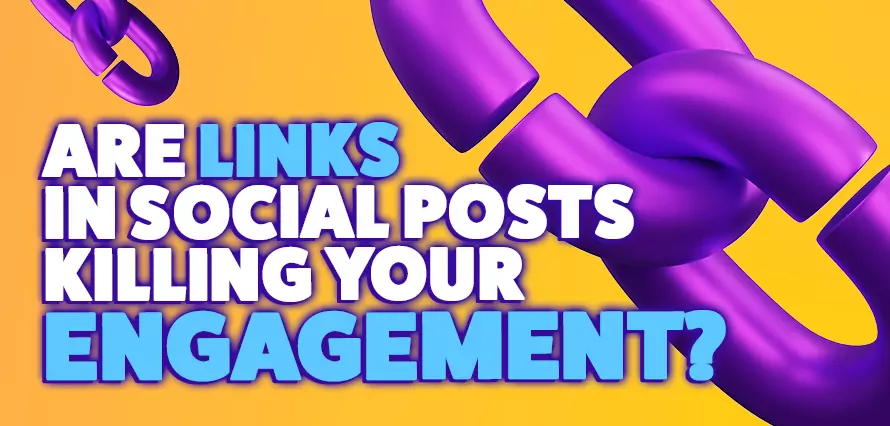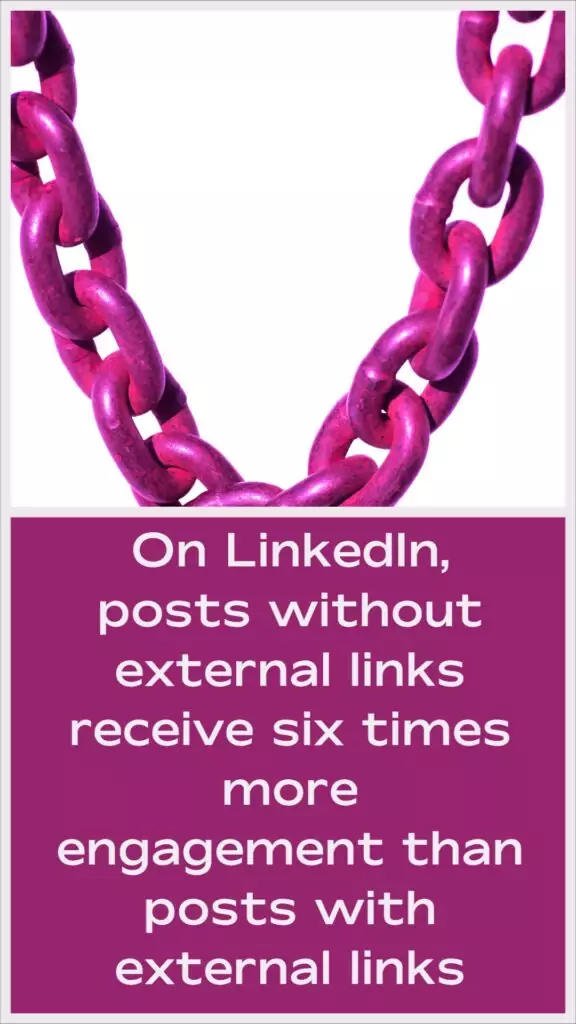December 16, 2024

Links are a double-edged sword in social media. They can drive traffic, but they also risk cutting your engagement. Platforms are rewriting the rules to keep users on their apps. And it’s changing how links perform in posts.
The challenges with links in social posts
Algorithms deprioritise external links (I know, it’s frustrating). Platforms like X (formerly Twitter) and Facebook penalise posts that encourage users to leave their feeds. For example, tweets with links often see reduced visibility, and Facebook posts with links are shown to fewer people than native content.

Hootsuite found that tweets without links receive 25% more engagement than those with links (Who knew FOMO worked better than a link to your blog?). Users are more likely to comment or share when the post doesn’t push them elsewhere.
We all know, Instagram links in captions aren’t clickable, and only accounts with over 10,000 followers can add clickable links to Stories. While the platform offers tools like Link Stickers, their use still limits reach compared to fully immersive content.
So, where do links still work
- Pinterest drives clicks. As a visual search engine, Pinterest thrives on external links. With a strong image and clear description, click-through rates remain high (Proof that beautiful pictures still win).
- LinkedIn is nuanced. While links can reduce visibility, a smart workaround is placing the link in the first comment. This tactic allows posts to perform better while still directing traffic. (hehe, the algorithm loves a loophole)
- Behavioural techniques boost link performance. Posts using urgency or social proof (e.g., “Join 10,000 others who’ve downloaded this guide”) see 20-25% more engagement, even with links included.
How to adapt your strategy
- Use platform-specific tactics
See the table below, for the latest guidance. You can also download it for free
- Prioritise audience value
By ensuring links enhance the user experience, not distract from it. Provide a reason for users to click that aligns with their interests or solves a problem.
- Experiment with linkless formats
Try posts without links to drive conversation and engagement. For platforms like Facebook, engaging content with CTAs to “check comments for details” can outperform traditional link posts (Yes, it feels sneaky, but it works).
- Track performance
Measure how your audience responds to different link strategies. A/B test posts with and without links to understand what resonates.
You need to rethink how you use links in social media. While links remain essential for driving traffic, a strategy that balances engagement-focused content with traffic-driving posts will yield better long-term results. Platforms are favouring immersive experiences. Adapt your approach to meet those expectations and test relentlessly to stay ahead.
| Social Platform | How They Handle Links | Best Practice |
| Allows external links but may reduce the reach of posts containing them compared to native content. | Use links sparingly; consider using engaging captions and native content to boost reach. use Facebook’s Instant Articles for faster loading. | |
| Limited support for external links; links in captions are not clickable. Clickable links are only available in the bio and Stories (for accounts with 10,000+ followers or verified accounts). | Use the “Link in Bio” strategy; for Stories, use the Link Sticker if available. Consider using Linktree or similar services to host multiple links. | |
| Twitter (now X) | Permits external links without significant penalties. Links are commonly used and accepted. | Include links naturally within tweets. Shorten URLs using Twitter’s automatic shortening or services like Bit.ly for better aesthetics. |
| Supports external links but may decrease the visibility of posts containing them compared to text-only posts. | Place links in the first comment to potentially improve post reach. Mix content types and focus on providing value to encourage engagement. | |
| TikTok | Does not support clickable links in video descriptions; clickable links are primarily available in profile bios for business accounts. | Use the link in your bio to direct traffic. Encourage viewers to visit your profile for the link. Focus on compelling content to drive interest. |
| YouTube | Allows external links in video descriptions and end screens but prefers to keep users on the platform. Excessive external linking may be discouraged. | Include relevant external links in video descriptions. Use cards and end screens to link to other YouTube videos or playlists to retain viewer engagement. |
| Encourages external links as it functions as a visual search engine directing users to content. | Ensure pins link to high-quality, relevant content. Use clear images and descriptions to improve click-through rates. | |
| Allows external links but can be cautious of self-promotion; community guidelines vary by subreddit. | Follow subreddit rules. Provide value and engage genuinely. Avoid spammy linking. | |
| Snapchat | Limited support for external links; can add links to snaps that viewers can swipe up to access. | Use the swipe-up feature to add links to snaps. Keep content engaging to encourage interaction. |
| Primarily a messaging app; supports link sharing in messages but not as a broadcasting tool for links. | Use direct messaging to share links with contacts. For WhatsApp Business, use quick replies and catalogues for sharing product links. | |
| Bluesky | Bluesky supports external links within posts. With a 300-character limit per post, ensure your message is clear and direct. | After pasting a link, select “Add link card” to generate a preview, enhancing visibility and engagement. |
| Threads | Threads allows users to include external links in their posts, which generate automatic previews displaying the website’s title, description, and image. | Craft compelling text to accompany your links, encouraging users to interact with your post. Right now, it is all organic, so get it right and your reach will fly |